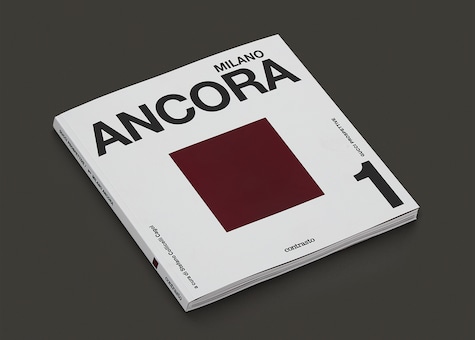Alessandro Michele’s new collection for Gucci evokes the Renaissance world, full of new beginnings, when fashion became a sophisticated form of communication. It conjures up historic details and layers them with a unique contemporary interpretation, playing with symmetry and structure, to create a collection imbued with strength and spirit. Elizabeth Currie, Associate Lecturer at Central Saint Martins College of Art and Design and author of the newly published ‘Fashion and Masculinity in Renaissance Florence’ uncovers the meanings behind Renaissance fashion.
Fashion was in its ascendancy at the courts of the Renaissance and powerful female rulers ensured that it was a truly international affair. Catherine de’ Medici popularized Italian fashions at the French court and Elizabeth I’s tailors copied patterns from abroad. Women wrote to one another across countries to share new ideas, sending dolls dressed in the latest styles for inspiration. For sovereigns like Catherine de’ Medici and Elizabeth I, who had to negotiate their roles in a man’s world, their image was the ultimate source of strength. In 1586, Elizabeth said: ‘We princes, I tell you, are set on stages in the sight and view of all the world duly observed’.
Reputations depended upon seeing and being seen and clothing was a focal point of court spectacle. Strong silhouettes, tailored bodices, voluminous sleeves and shoulder rolls—style details visible in Alessandro Michele’s looks from the runway—all became part of the armour that increased a Renaissance woman’s visibility and authority. Not only did Catherine de’ Medici have to compete with her husband’s many mistresses, ten years passed before she finally produced an heir to the throne. Elizabeth I never married but cleverly turned this into a virtue, promoting herself as the chaste Virgin Queen loyal to her country above all. Fashion embodied attitudes towards fertility and sexuality. The pomegranate design on many luxurious Italian silks was a symbol of health, fecundity, and resurrection because of its many seeds. White linen smocks were emblems of moral or spiritual purity as well as physical cleanliness, so it was crucial that they were always visible. The small frills on their cuffs and collars grew and grew, developing into the iconic ruff. Furs were sometimes given as wedding gifts and jewelled marten furs were even thought to aid conception. Glimpsed at the borders of garments, fur also invited touch and suggested sensuality. So much of the body was hidden that liminal areas, such as ankles, wrists, and necks, took on a greater sexual charge. Some accessories were designed to reveal and conceal at the same time, like semi-sheer partlets that covered the neckline, decorated with diamond patterns in pearls and metal threads.
These magnificent outfits were also laced with hidden meanings. Stories were embroidered into garments, sometimes including coded political messages. In one famous portrait, Elizabeth I is shown as omniscient, wearing a cloak embroidered with eyes and ears. She owned jewellery and clothing decorated with motifs of serpents, representing wisdom. The very materials of fashion had embedded properties. Stones for jewellery, such as coral, were thought to have talismanic or healing powers. Men and women both wore garments embellished with pearls. These were prized not only for their luminescent beauty, but also because of their seemingly miraculous genesis from a piece of grit, which fascinated the Renaissance imagination.
Renaissance knowledge of medicine and anatomy suggested that the dividing lines between the sexes could be porous. Fashion helped to highlight the differences or blur the boundaries between men and women. These ideas about gender fluidity are subtly referenced in Alessandro Michele’s collection with delicate embroideries on men’s jackets, or braided frogging on women’s dresses. When Elizabeth I wore this kind of ornamental fastening—inspired by Ottoman men’s kaftans and later adopted in military uniforms—it reinforced her claim that she possessed the heart and stomach of a king. Men, on the other hand, sometimes wore brightly-coloured silks, feathers, and decorations that could have been considered feminine. To pull it off they perfected the courtier’s art of sprezzatura, a form of nonchalance or ease, showing that it was not simply a case of what you wore but also how you wore it. Elizabeth Currie's book 'Fashion and Masculinity in Renaissance Florence' is published by Bloomsbury, 2016.
1. The Rainbow portrait of Queen Elizabeth I 1600-1602 In the collection of the Marquess of Salisbury. On display at Hatfield House.
2. Jewel Book of Duchess Anna von Bayern of Bavaria by Hans Mielich, 1552-1555. This unique manuscript is an inventory of the jewelry owned by Duke Albrecht V of Bavaria and his wife, Duchess Anna. The book contains 110 magnificent drawings by the Munich court painter Hans Mielich.
3. The ‘Phoenix’portrait. National Portrait Gallery.
4. Henry Howard Earl of Surrey at age 29, 1546. Author unknown. Attributed to William Scrots.
5. Portrait of Isabella de Medici, 1550 ca. Uffizi, Florence.
6.The Portrait of Eleonora of Toledo with her son Giovanni is an oil painting (115×96 cm) by Agnolo Bronzino, dating from 1545 and housed in the Uffizi Gallery in Florence.

Link copied to clipboard.